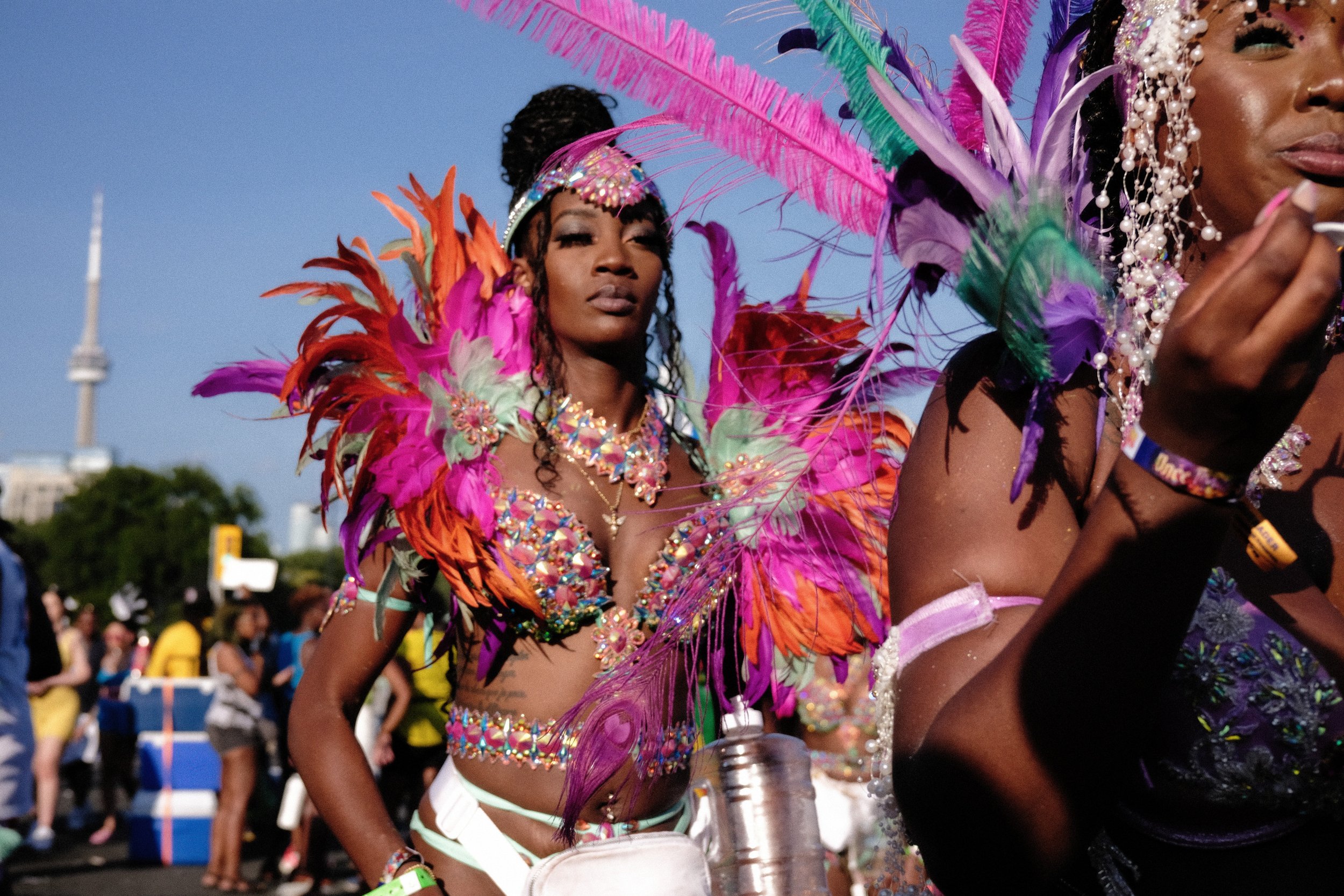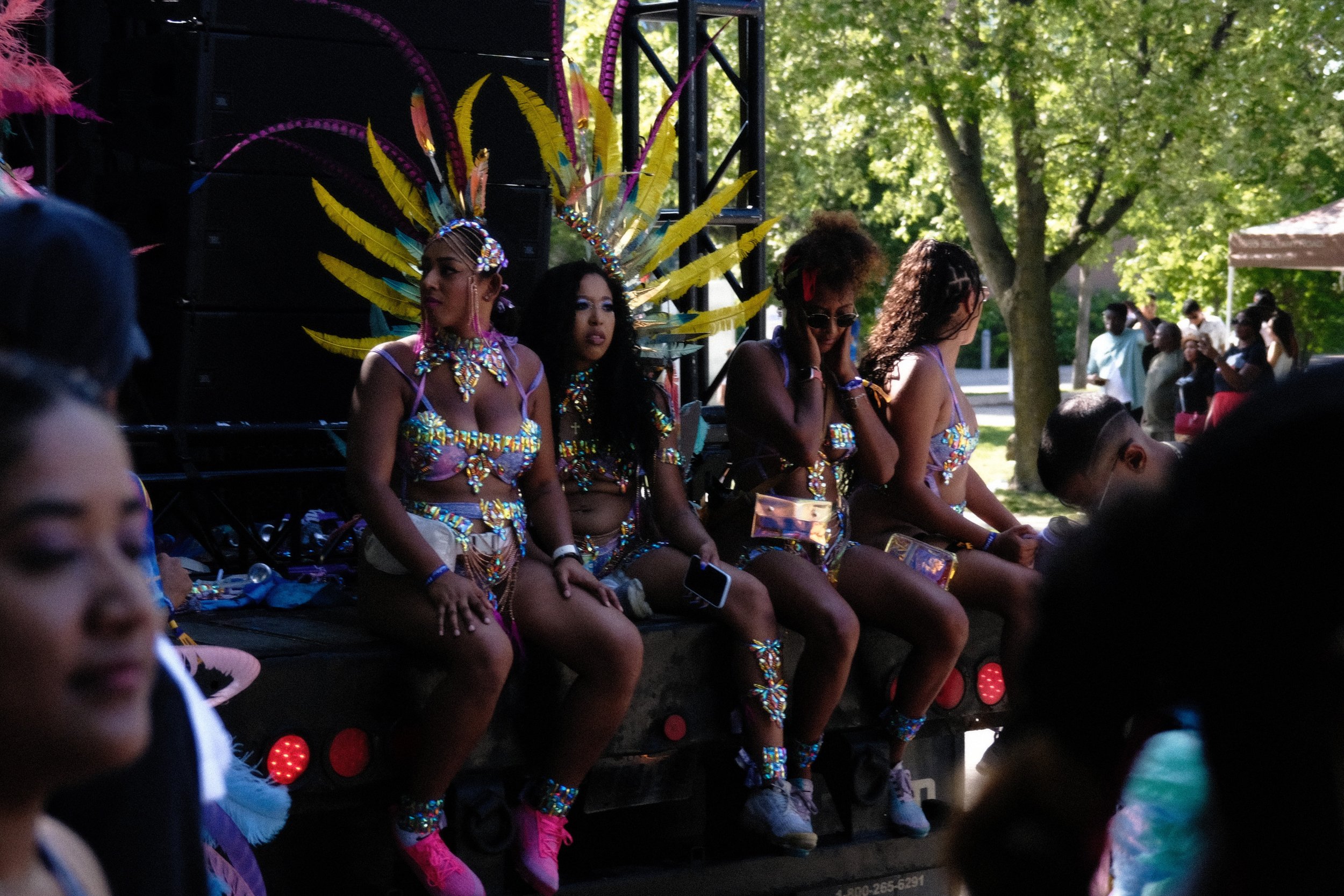Caribana: A Celebration of Toronto’s West Indian Culture.
IN THE BEGINNING
Greetings beloved.
Growing up in South Jamaica Queens, New York, my family's tales from Kingston, Jamaica, were the lullabies of my childhood. My grandmother, a fierce single mother of five *and me that made 6, had planted our roots there during the 1960s after leaving the turbulent streets of Kingston. Jamaica, an island nation with a rich tapestry of cultures, has always been a melting pot of ethnicities.
THE CLAN
South Jamaica Queens, with its vibrant streets and diverse neighborhoods, served as the backdrop to my story for the first two decades of my life. However, as I approached my twenties, the familiar call of my birthplace, Toronto, grew louder, urging me to return.
Growing up in New York, a city celebrated for its vast mosaic of cultures, I was acutely aware of the unique position the Jamaican community held. We were but a small fragment in this expansive tapestry, often overshadowed by the dominant narratives. The 1980s and 90s, in particular, weren't kind to the Jamaican diaspora. Stereotypes and misconceptions frequently eclipsed our rich cultural heritage. Yet, within the walls of our home, a different story unfolded. The soulful rhythms of Reggae, born from the socio-political struggles of the 60s and 70s, and the infectious beats of Soca, a harmonious fusion of soul and calypso, resonated deeply. These melodies were more than just music; they served as a tangible link to our Jamaican lineage, reminding us of a heritage as diverse as it was beautiful.
Jamaica, often reduced to narrow perspectives in mainstream media, is a land of profound multiculturalism. I've affectionately dubbed it "the island of many," paying homage to its rich tapestry of diverse settlers. From the OG Taino inhabitants to the Spanish colonizers, from the hardworking Indian laborers to the resilient Africans, and the enterprising Chinese, each group has left an indelible mark on Jamaica's cultural landscape. This narrative of diversity isn't just the story of Jamaica; it's intricately woven into my own identity. A testament to this is my great grandfather, whose Chinese lineage traces back generations, serving as a poignant reminder of the island's multifaceted heritage.
The Taino People.
Before the Europeans set foot on the island, it was home to the Taino people. These indigenous inhabitants called the island "Xaymaca," meaning "Land of Wood and Water." They led a peaceful life, fishing, farming, and crafting intricate art.
Jamaica: The Island of Many Stories.
Jamaica, known for its vibrant culture, reggae beats, and breathtaking landscapes, has a history as rich and diverse as its people. But to truly understand the essence of this Caribbean gem, we need to journey back in time.
The Taino Era:
Before the Europeans set foot on the island, it was home to the Taino people. These indigenous inhabitants called the island "Xaymaca," meaning "Land of Wood and Water." They led a peaceful life, fishing, farming, and crafting intricate art.
The Spanish Influence:
In 1494, Christopher Columbus arrived, and with him began the era of Spanish colonization. The Spanish saw the island's potential and established Sevilla la Nueva, one of the first European settlements in the New World. However, their rule was marked by the decline of the Taino population due to diseases and forced labor.
The British Era:
By the mid-17th century, the British took over, making Jamaica a key colony in their empire. With them came the dark era of the transatlantic slave trade. Africans were forcibly brought to work on sugar plantations, enduring unimaginable hardships. Yet, their indomitable spirit gave birth to a rich Afro-Caribbean culture that's the heartbeat of Jamaica today.
Post-Emancipation and the Melting Pot:
After the abolition of slavery in 1834, there was a need for labor on the plantations. This led to the arrival of indentured laborers from India and China. Each group brought their traditions, food, and customs, adding layers to Jamaica's multicultural tapestry.
The Indian influence is evident in the island's cuisine, with dishes like curry goat becoming staples. The Chinese community, though smaller, made significant contributions to commerce and trade.
Independence and Beyond:
Jamaica gained independence from British rule in 1962. Since then, it has grown into a nation proud of its mixed heritage, celebrating its African, European, Indian, and Chinese roots.
Today, Jamaica stands as a testament to resilience, diversity, and unity. It's an island where every rhythm, every dish, and every story speaks of a journey from adversity to celebration.
That was then, This is now.
In 2017, I found myself just a stone's throw away from the epicenter of Toronto's Caribana festival. The atmosphere was electric. The air, thick with the tantalizing aroma of West Indian delicacies, carried the vibrant beats of Soca. Everywhere I looked, the city was awash in a riot of colors, with costumes that seemed to dance and shimmer with life.
For a passive street photographer like me, Caribana was nothing short of a goldmine. Every snapshot told a story, every shutter click encapsulated a raw emotion. The elaborate "personal floats" were a marvel, defying both gravity and imagination. The crowd's infectious energy was palpable, creating a sensory experience that was almost overwhelming. And when I fully immersed myself in the festivities... Oh, Laaaawd! It was the rejuvenation my soul had been yearning for.
Looks.
“Everywhere I looked, the city was awash in a riot of colors, with costumes that seemed to dance and shimmer with life.”
Toronto, in comparison to many American cities, has always been more open in celebrating its cultural diversity. Yet, I often found myself yearning for events that celebrated Black and West Indian culture. Caribana was the answer to that yearning. It was a weekend that could quench anyone's cultural thirst. The music, the dancing, the grandeur of the floats, the dedicated SOUNDCREWS, and the intricately designed costumes that some spend an entire year crafting — it's all a testament to the festival's significance. The energy of the attendees is unparalleled, drawing people from all corners of the globe every first long weekend of August. In my eyes, Caribana isn't just another event; it's the crown jewel of Toronto's cultural calendar.
A Brief History
Toronto's Caribana, now known as the Toronto Caribbean Carnival, began in 1967 as part of Canada's Centennial celebrations. Conceived by Toronto's Caribbean community, it was inspired by Trinidad's pre-Lenten Carnival. Over the decades, it has blossomed into a major summer event, drawing nearly two million attendees each year.
The festival celebrates the rich tapestry of Caribbean culture, from its infectious music like calypso and soca to vibrant masquerades and dances. The Grand Parade, the festival's crown jewel, showcases participants in dazzling costumes expressing thematic masquerade bands, dancing to live Caribbean rhythms. Originally held on Yonge Street, the parade now graces Lakeshore Boulevard, filling it with color and energy.
While the Toronto Caribbean Carnival is its official name since 2015, many still affectionately call it Caribana. Despite challenges, including financial strains and route changes, the festival stands as a testament to Caribbean heritage in Toronto and remains North America's largest Caribbean cultural event. In essence, Caribana is Toronto's annual splash of Caribbean vibrancy, music, and tradition.
Challenges of Shooting at ‘Bana.
Capturing the essence of Caribana through a camera lens presents its own set of challenges. The sheer vibrancy and magnitude of the event make it nearly impossible to capture everything in a single frame. Every time I think I've captured the perfect shot, and say to myself “yeah, that’s the one!” I turn my head and there is a literal sea of colors, feathers, beads, banners, and more.
Always Forward.
“Each photograph I take isn't just an image; it's a fragment of a larger narrative that speaks of community, culture, and legacy.”
But Caribana is more than just a visual spectacle. For me, it's a journey of self-discovery. It echoes the tales my family shared, the pride they held in our Jamaican roots, and the rich tapestry that weaves the West Indian community together. Each photograph I take isn't just an image; it's a fragment of a larger narrative that speaks of community, culture, and legacy.
While I typically maintain a distance in my street photography, Caribana is different. The warmth and openness of the attendees are palpable. They don't just notice the camera; they engage with it, striking poses and sharing their spirit.
For any street photographer who hasn't experienced Caribana, real talk it’s time for some introspection. If you haven't captured Caribana, you're missing out on a transformative experience. do the right thing: GO TO CARIBANA!
























Photographing Caribana was more than just capturing images; it was an immersion into moments that might have otherwise slipped past me. Had I been merely a spectator, wandering amidst the revelry, many of these instances would have faded into the background. Sure, some shots were spontaneous, taken on the fly, but there were countless times when I paused. I engaged in conversations, delving into the stories of individuals, understanding the significance behind their costumes, and the narratives they chose to portray.
This event, in all its vibrancy, serves as a reminder of our cultural depth. It underscores the vastness of our shared heritage, the collective memories we hold, and the unyielding love and dedication that binds us. It's a testament to the unity that exists amidst diversity. In the midst of the music, and the dance, there's a singular message that resonates: We are one.
One love. One people.
O




